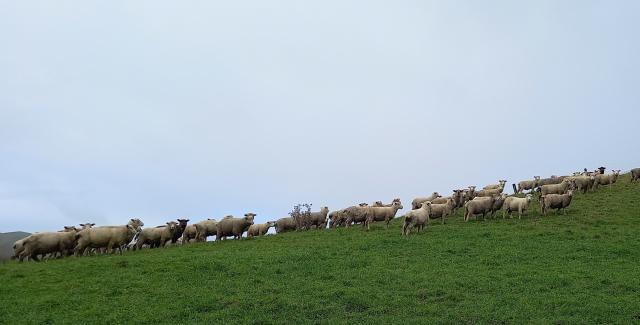At the recent Parasites in the Pacific Conference, B+LNZ’s Principal Scientist, Dr Cara Brosnahan, presented on the importance of farmer engagement in agricultural research and shared promising results from the Smartworm app.

The Parasites in the Pacific conference, which took place in Auckland, brought together scientists to discuss cutting-edge parasitology research. The event covered a range of topics, from livestock parasites to human parasitology, with organisations like AgResearch and the University of Calgary presenting.
“It was great to be able to attend the conference and hear all about the research that is being undertaken. Bringing together so many passionate scientists to share their knowledge is crucial,” says Dr Brosnahan.
“It gives us a chance at B+LNZ to share what we have learnt and celebrate our farmers while also gaining invaluable insights into what other researchers are doing and what has and hasn’t worked for them.”
Dr Brosnahan learned about several cutting-edge research areas, including innovative technologies for controlling blowflies and ticks, vaccines for liver fluke, and genetic studies on barbers-pole worm to identify new drug targets. Additionally, she explored the genetics of blowflies, the impact of drenches on ewe and lamb behaviour, and recent findings on drench resistance in liver fluke in Australia.
She was given the opportunity to present on behalf of B+LNZ on two key topics. The first presentation focused on the Smartworm® app, a tool currently in its second phase of trials on New Zealand farms.
Smartworm® uses targeted selective treatment (TST) to reduce drench usage by identifying animals that truly need treatment.
Initial trials showed up to a 57 percent reduction in drench use, offering significant savings for farmers without compromising animal health. The app, which attracted interest from Australian scientists at the conference, has the potential to revolutionise internal parasite management by reducing costs and helping to slow down development of resistance and enhancing sustainability.
“Smartworm® shows how new technology could help how we manage parasites, ensuring animal health is maintained while lowering costs for farmers,” adds Dr Brosnahan.
Her second presentation highlighted the importance of working closely with farmers, stressing that their input is crucial to getting the most out of agricultural research.
“Building trust with farmers is key. They are experts in their own systems, and their insights are vital for developing practical on-farm solutions,” she explained.
Dr Brosnahan used B+LNZ’s Hill Country Futures programme as an example of successful collaboration. This programme engaged nearly 170 sheep and beef farmers, shaping research that directly addresses their challenges and future aspirations.
Resources like FarmSalus, which was also developed as a product of this engagement, are helping farmers improve not only farm system resilience but also their well-being.
“What was learnt in Hill Country Futures is now being applied across all research programmes, ensuring that farmer-driven insights continue to inform and guide solutions in the sector.”
“By truly listening to farmers, we’ve been able to identify their key issues and create tools that enhance both farm productivity and farmer health,” said Dr Brosnahan.
By engaging directly with farmers, B+LNZ ensures that research and tools like Smartworm® are practical and immediately applicable on-farm. These innovations are set to deliver long-term improvements in parasite management, animal welfare, and farm profitability.